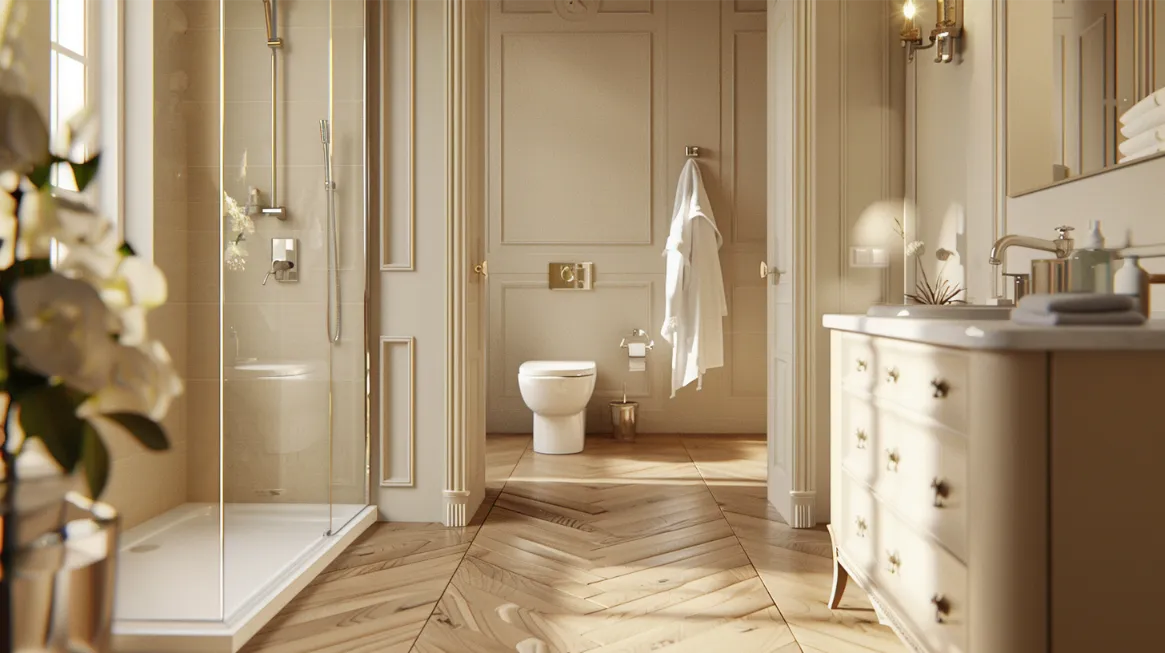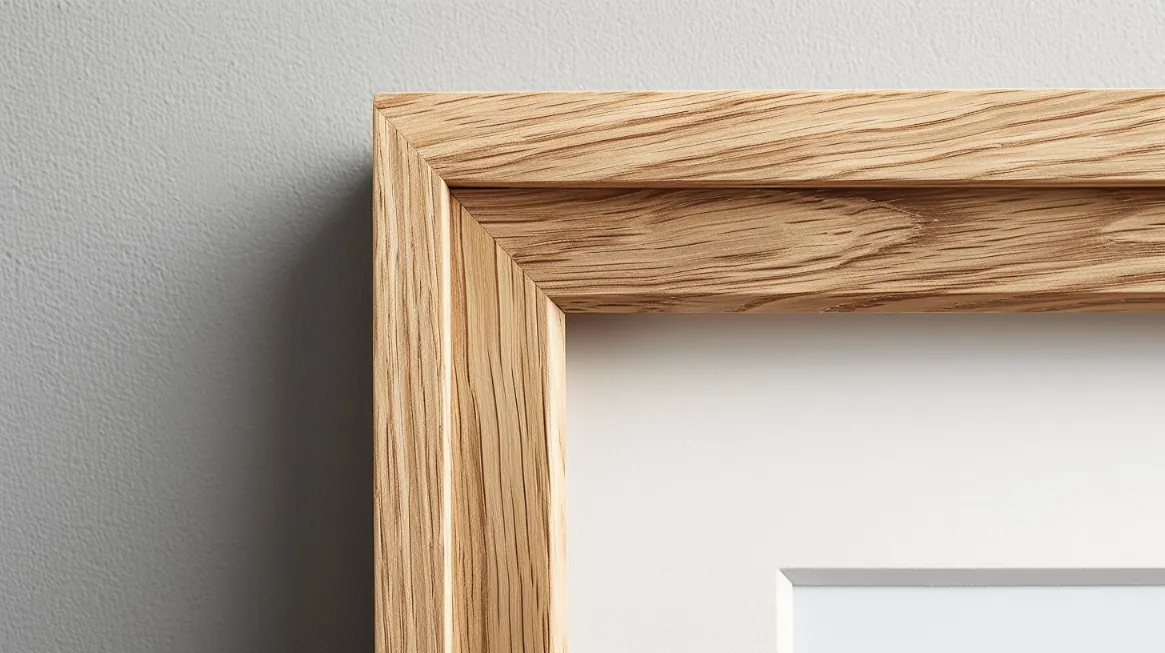Ready to elevate your space with a DIY accent wall? First, measure and select materials like wood planks, tiles, or paint—prep by clearing and priming the wall. For wood walls, cut the layout and secure pieces carefully. Tiling? Choose, cut, and set tiles precisely. Painting? Tape, paint, and add layers for impact. Finish with caulk, trim, and decor placement. Take each step confidently to craft a stunning focal point in your room. More tips await to guide your journey to a standout accent wall.
Key Takeaways
- Measure the wall accurately and select the design style.
- Prepare the wall surface by removing existing materials.
- Install materials securely and label pieces for tracking.
- Use painter’s tape for clean lines when painting.
- Finish with caulk, trim, and decor at eye level.
Step 1: Planning Your Accent Wall
Precise measurements and thoughtful design choices are crucial for a successful outcome when planning your accent wall. The first step is to measure the wall accurately, considering the height, width, and obstacles like doors or windows that could impact your design.
Next, choose a design that fits your style – the classic look of shiplap, the timeless elegance of board and batten, bold geometric patterns, intricate tile designs, or striking wallpaper murals. Once you’ve settled on a design, it’s time to decide on materials. Options like solid wood planks, various tiles, wallpaper, or creative paint techniques can transform your space.
Remember to calculate the materials needed, including a 10-15% waste factor for cuts and mistakes. If your design involves lighting or electrical work, plan accordingly and consult a professional for safety. Proper planning guarantees a smooth installation process and a visually stunning accent wall that enhances your space.
Step 2: Preparing the Wall Surface
Properly preparing the wall surface is essential for achieving a smooth and long-lasting finish when installing an accent wall. To begin, remove any existing materials like wallpaper using a scoring tool and a wallpaper remover for a clean surface. Carefully remove the trim and molding with a pry bar for reinstallation later.
Expect a labor-intensive process using a chisel and hammer for tiled walls. Once stripped bare, wipe down the wall to remove any remaining debris. Next, inspect for drywall damage and repair any cracks or holes with joint compound, ensuring a seamless blend with the surrounding wall. Sand the repaired areas and the entire fence lightly to rough up the surface for better adhesion.
Vacuum and wipe down the walls to remove dust before priming. A high-quality primer seals the surface, prevents future stains, and enhances material adhesion, ensuring your accent wall looks flawless.
Step 3: Installing Wood Accent Walls
To install your wood accent wall, carefully cut all wood trim pieces to the required sizes and angles using a miter saw or circular saw. Guarantee straight sections have 90-degree cuts; use angled cuts known as miters for corners. Make precise measurements and mark angles accurately before cutting to avoid errors.
Lay your design pattern on the floor or table for a visual check before securing pieces to the wall. Number or label each piece for easy installation tracking. Locate wall studs using a stud finder and secure horizontal pieces with construction adhesive and finish nails, spaced adequately for support. Apply construction adhesive to butt joints and mitered corners for tight connections.
Step 4: Tiling an Accent Wall
After successfully installing your wood accent wall with precision and attention to detail, the next step is to begin tiling an accent wall to add a touch of elegance and sophistication to your space.
When tiling your accent wall, the choice of tile size, material, and pattern is essential. Consider using smaller mosaic tiles for intricate designs or larger format tiles for a bold statement that complements your wall’s dimensions. Popular materials like ceramic, porcelain, natural stone, glass, or metal offer various textures and colors to suit your style. Plan your pattern carefully, whether it’s herringbone, chevron, or a custom mosaic design.
Before tiling, install a cement board underlayment for waterproofing and stability. Make precise tile cuts using tools like a wet saw for straight cuts and tile nippers for detailed work. Set your tiles in the desired pattern, maintaining even grout lines. Allow the thin-set to cure fully before grouting, ensuring a flawless finish for your beautifully tiled accent wall.
Step 5: Painting Accent Wall Designs
Consider using geometric patterns through careful painting techniques for a bold, modern accent wall. First, use painter’s tape to mask off any trim, baseboards, or adjacent walls you want to keep paint-free. Make sure to press the tape firmly to avoid paint bleed. For protection, lay down drop cloths on the floor. When applying the paint, you have two options: a paint sprayer or a foam roller. A paint sprayer gives a smooth, professional finish, while a foam roller provides a stipple-free look. Work in sections for even coverage.
To create geometric patterns, plan your design and use painter’s tape to outline it. Apply 1-2 coats of paint in the exposed areas and remove the tape while the paint is wet for clean lines. Remember to apply 2-3 coats of paint for a rich finish. Use an angled brush for edges and consider a higher sheen paint for durability. Lastly, remove the painter’s tape carefully by pulling it back at a 45-degree angle while the paint is still wet to avoid ragged edges.
Step 6: Finishing Touches
Focus on the final details to enhance the professional look of your accent wall. To achieve a seamless finish, use paintable latex caulk to fill gaps where the accent wall meets trim, corners, or ceilings. Apply the caulk with a caulk gun, then smooth it with a wet finger for a clean appearance.
For an added touch of elegance, consider installing decorative wood trim pieces or a stylish wallpaper border to frame your accent wall beautifully. These additions can transform a plain painted wall into a stunning focal point in your space.
To complete the look, hang wall decor like artwork, mirrors, or shelves on your accent wall. Arrange these pieces at eye level and use proper wall anchors for security. By incorporating adequate painting techniques and these finishing touches, you’ll create a custom accent wall that you can be proud of.
Experiment with different colors, patterns, and materials to add your unique touch to the space.
Frequently Asked Questions
What is an accent wall?
An accent wall is a single wall in a room with special decorative treatment, such as a different color, material, or design, to make it a focal point. The other walls in the room are typically left a neutral color.
How do I choose which wall to make the accent wall?
The accent wall should be the natural focal point when you enter the room. Common choices are the wall behind a bed, fireplace, media center, or prominent architectural feature.
How much does a DIY accent wall cost?
Depending on the size of the wall, costs can range from $50-100 for a painted accent wall to $500 or more for materials like wood planks or stone. Plan your budget accordingly.
How long does it take to do a DIY accent wall?
The time required varies based on the complexity, but a simple painted accent wall may only take a day, while more intricate designs like wood planks or wallpaper could take a weekend or more.




